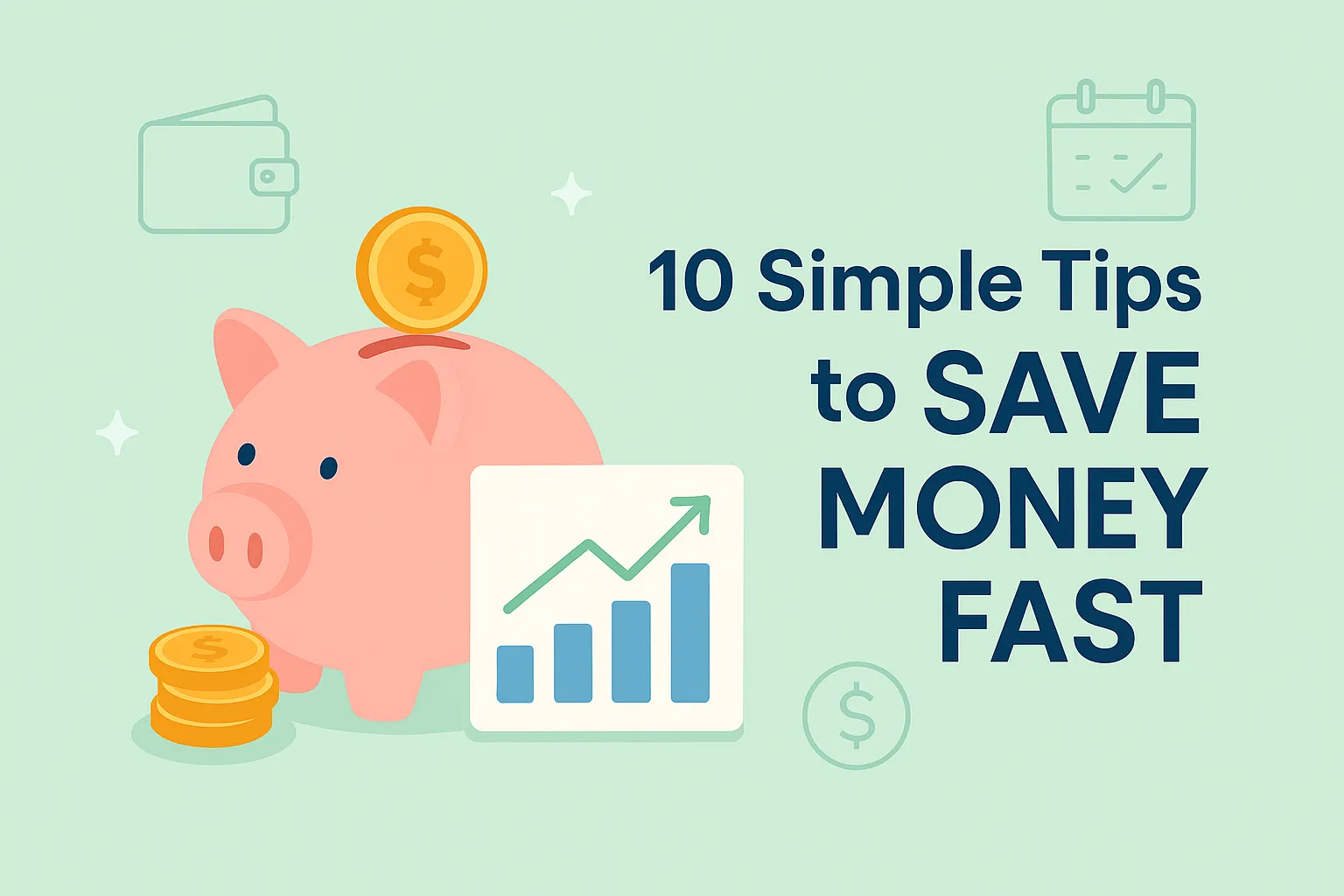10 Simple Tips to Save Money Fast

In today’s fast-paced world, saving money quickly isn’t just about cutting back—it’s about being smart and intentional with your spending. Whether you’re building an emergency fund, paying off debt, or just trying to get your finances under control, here are 10 practical strategies that can help you start saving money right away—without feeling deprived.
1. Track Every Expense to Identify Hidden Spending
The first step toward saving money fast is knowing exactly where your money goes. It’s easy to lose track of spending when you’re swiping a card or clicking "Buy Now" online. Use apps or a basic spreadsheet to record every expense.
Why it works:
You may think your daily coffee is harmless—until you realize it costs you $90 a month. Tracking reveals patterns you can change immediately, helping you cut waste and redirect money into savings.
2. Start a 7-Day No-Spend Challenge
Challenge yourself to go a full week without spending money on anything non-essential. That means no eating out, no shopping, no online purchases—only necessities like groceries or fuel.
Why it works:
This mini detox resets impulsive habits. Most people find they save at least $100 in just one week, and it encourages mindful spending afterward.
Pro tip: Involve a friend or partner for accountability and motivation.
3. Automate Your Savings on Payday
Set up an automatic transfer to your savings account every time you get paid. Even small, consistent transfers—like $25 or $50—build momentum and discipline.
Why it works:
If you wait until the end of the month to save “what’s left,” chances are, there won’t be much. Paying yourself first ensures you prioritize saving.
Example:
Saving just $50 per week = $2,600 per year.
4. Cook at Home and Meal Prep
Eating out can easily consume a third of your monthly income. Instead, plan 3–5 simple meals per week and cook in batches. Leftovers make great lunches and reduce the temptation to order delivery.
Why it works:
Preparing meals at home costs a fraction of restaurant prices. Plus, you’ll improve your health, which saves money on future medical bills.
Example:
A home-cooked pasta meal might cost $3 per serving, compared to $12 at a restaurant.
5. Audit and Cancel Unused Subscriptions
Many of us pay for services we rarely use: streaming platforms, music apps, online tools, or gym memberships. Review your bank statements and cancel anything you haven’t used in the last 30 days.
Why it works:
You regain control over recurring expenses and avoid “subscription creep,” where tiny charges silently eat away at your budget.
Tools: Try Truebill or Rocket Money to automatically detect and manage subscriptions.
6. Sell Stuff You Don’t Use
Take a weekend to declutter your home and list unused items—like electronics, clothes, books, or furniture—on platforms like Facebook Marketplace, Vinted.
Why it works:
You earn fast cash and simplify your space. Many people make $200–$500 from a single decluttering session.
7. Buy Generic—Not Brand Name
When grocery shopping or buying over-the-counter medicine, choose store brands. In most cases, the ingredients and quality are nearly identical.
Why it works:
Generic products are typically 20–30% cheaper. Over time, that adds up to hundreds of dollars in savings.
Example:
A brand-name painkiller might cost $6.99, while the generic version is just $3.49 for the same quantity and dosage.
8. Use Cashback and Discount Apps
Before making any purchase, check for cashback offers or promo codes. Apps like Rakuten, Honey, or Shopback give you money back for shopping at your favorite stores.
Why it works:
You’re already spending—why not get part of it back? Even 5% cashback adds up over time.
Pro tip: Stack coupons with cashback offers for double the savings.
9. Cut Bills by Negotiating or Switching Providers
You might be overpaying for your phone, internet, or insurance. Call your providers and ask for a better rate, or switch to competitors offering new customer deals.
Why it works:
Most companies prefer to keep a paying customer than lose you altogether. A 10-minute call can save you $20–$50 a month.
Example script:
“I’ve been a loyal customer for 2 years. I saw your competitor is offering a better rate—can you match or beat it?”
10. Set a Specific, Time-Bound Savings Goal
Instead of vaguely saying, “I want to save more,” choose a clear target like “Save $1,000 in 3 months.” Break it into weekly goals so you can track your progress and stay motivated.
Why it works:
Goals with deadlines create urgency and structure. You’ll be more likely to follow through when the objective feels real and achievable.
Bonus tip: Use a visual tracker like a savings thermometer to gamify your progress.
Final Thoughts
Saving money fast doesn’t mean living in scarcity—it’s about spending with intention. The key is consistency. Apply even just 3–4 of these tips and you’ll see results in the first month.
Ready to take control of your finances? Start today and watch your savings grow—one smart decision at a time.



